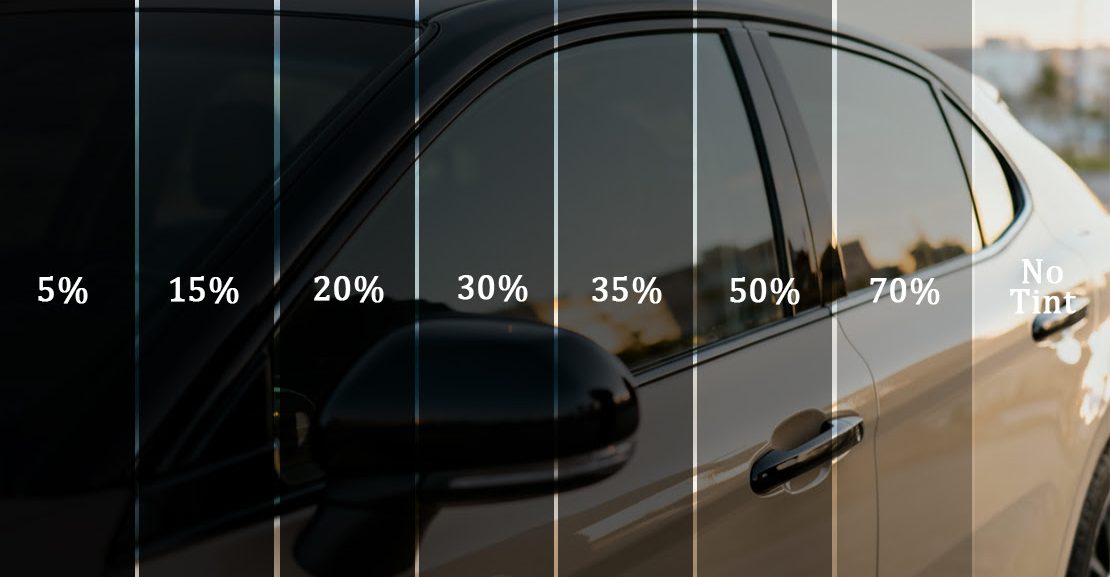If you’re driving on the 405 freeway, or maybe the PCH in Orange County, those brand-new window tints you had installed last week are about to be tested. A black and white patrol car slides up right next to you at the red light. Of course, your mind jumps straight to those windows – did the shop install something that was legal or not? Orange County law enforcement carries these handheld meters around all the time, and these little devices can measure the precise amount of light that passes through your glass. VLT stands for Visible Light Transmission, and this percentage is what determines if you’re driving away with a warning or a ticket in hand.
The enforcement here is actually quite a bit stricter than what you’ll find in most of the neighboring counties. Officers in places like Huntington Beach and all along the 405 corridor run these targeted enforcement campaigns where window tint is their main focus. The way it works is they’ll pull you over and walk up with their meter and take a reading right there on the side of the road, and write you up if the numbers don’t match what the law says.
VLT is actually pretty simple once you know how it works. A lower percentage means less light gets through – so if you have 20% VLT, only one-fifth of the available light makes it through the glass. Most vehicles already have some level of factory tint, and this typically falls somewhere in the 15% to 20% VLT range. The problem is when drivers add aftermarket film on top of the glass that’s already tinted from the factory – suddenly you have windows that are way darker than what the law permits, and you might not even know it. Another issue that’s particular to Orange County is how the year-round coastal sun breaks down the tint film over the years, and what started as a legal installation can slowly, over time, become dark enough to earn you a ticket.
What These VLT Percentages Really Mean
VLT stands for Visible Light Transmission, and it’s just the measurement that tells you how much light actually passes through your car windows. The percentage number gives you a solid sense of what you’re going to get once you have that tint installed.
The numbering system for window tint actually runs backwards, and it makes it confusing for anyone who hasn’t dealt with it before. A 5% VLT means only 5% of the outside light gets through your window – that’s an extremely dark tint where nobody can see inside. A 70% VLT lets most of the light pass through and looks almost transparent when you’re standing next to it. Lower numbers always equal darker windows, and once that clicks, the entire system is suddenly much easier to grasp.
Most cars already have some level of tint when they leave the factory, and it’s something that most drivers never know about. The rear windows usually have somewhere between 15% and 20% VLT already applied. The windshield and front side windows are usually around 70% to 90%, and they’re almost transparent glass with just enough shade built in to help cut down on glare during your morning commute.
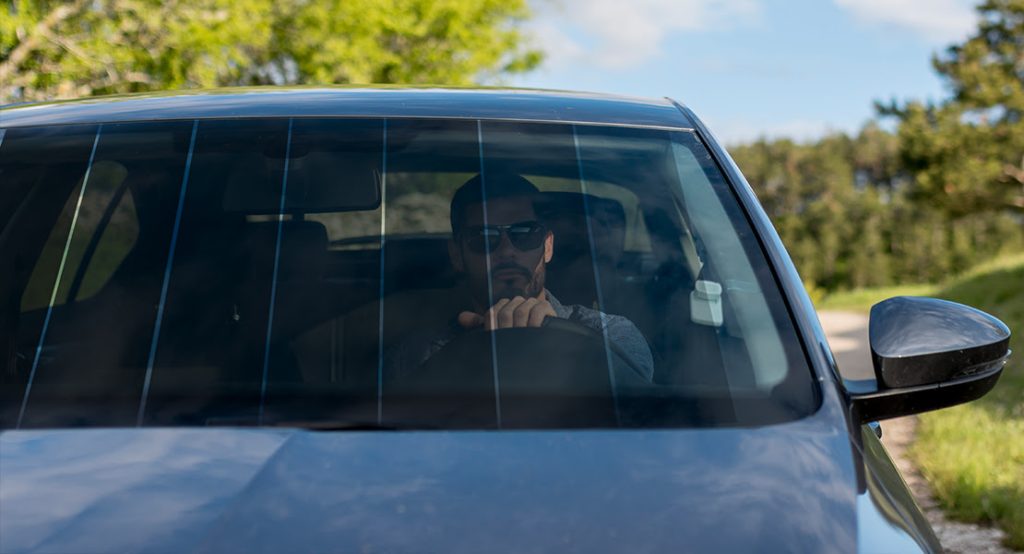
Not all window films work the same way, either. Some are specifically designed to block UV rays, and others are engineered primarily for heat reduction. Orange County‘s coastal environment brings another layer of challenge to the whole equation. The salt and moisture in our ocean air can create a natural haze that actually changes the VLT readings when technicians test your windows.
Window tint doesn’t last forever, and the California sun is especially brutal on window film. Day after day, month after month, that intense UV exposure slowly breaks down the material. A legal 70% tint that you installed three years ago might measure at 65% or 60% now. The adhesive layer can develop bubbles, and the film itself sometimes turns an ugly purple color or gets cloudy and hard to see through.
Manufacturing standards can vary quite a bit between companies, too. One manufacturer’s 35% tint might appear darker than another company’s 30% – even though the numbers say otherwise. The conditions during tests play a big role in these measurements, and I’ve seen identical films test differently depending on the equipment and environment used during measurement.
California Window Tint Laws You Should Know
VLT stands for Visible Light Transmission, and it’s the measurement that tells you how much light can pass through your car windows. The percentage number tells you how much outside light actually makes it into your car. So if a window has 70% VLT, that means 70% of the available light from outside will pass through the glass and into your vehicle.
California’s window tint laws rank as some of the toughest ones in the country, and the state has its reasons for these strict regulations. The law says your front side windows need to let at least 70% of light pass through – and if you’re familiar with tint percentages, that’s practically like see-through glass with barely any shade. Most other states let you go much darker. The windshield can have a tint strip, but the law caps it at just 4 inches from the top.
The regulations get a lot more relaxed once we move to the back of your vehicle. You can tint your rear passenger windows and rear windshield as dark as you want – there’s actually no VLT restriction at all for those windows. The only catch is that your vehicle needs to have dual side mirrors if you want to go with that darker tint and stay legal. And it’s not enough to just have the mirrors installed either – they need to be adjusted correctly at all times, or you could still get pulled over.
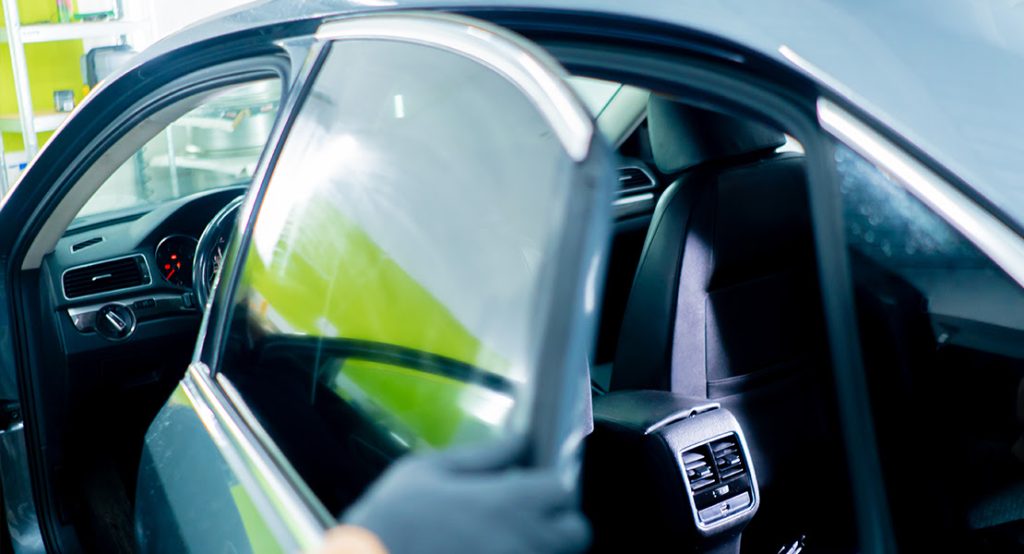
Assembly Bill 1303 was actually the legislation that set these regulations in motion years ago. What they cared about most was checking that drivers could still see pedestrians and cyclists well enough, especially at those chaotic downtown intersections where visibility matters the most.
Orange County, Los Angeles, Riverside – it doesn’t matter where you are in California, the window tint laws are the same everywhere. The state law applies to all counties with zero exceptions, and local governments can’t make their own tint regulations. Police officers from all across California have to use the same standards and the same equipment when they check your window tint for compliance.
How Orange County Handles Tint Violations
Orange County officers are actually quite strict about window tint violations, and they carry the equipment to back it up. They use these handheld meters that can measure the exact amount of light that passes through your car windows, and these devices are impressively accurate – we’re talking within about 3% in either direction. That small margin of error could be in your favor if you’re right at the legal limit, or it could just as likely work against you.
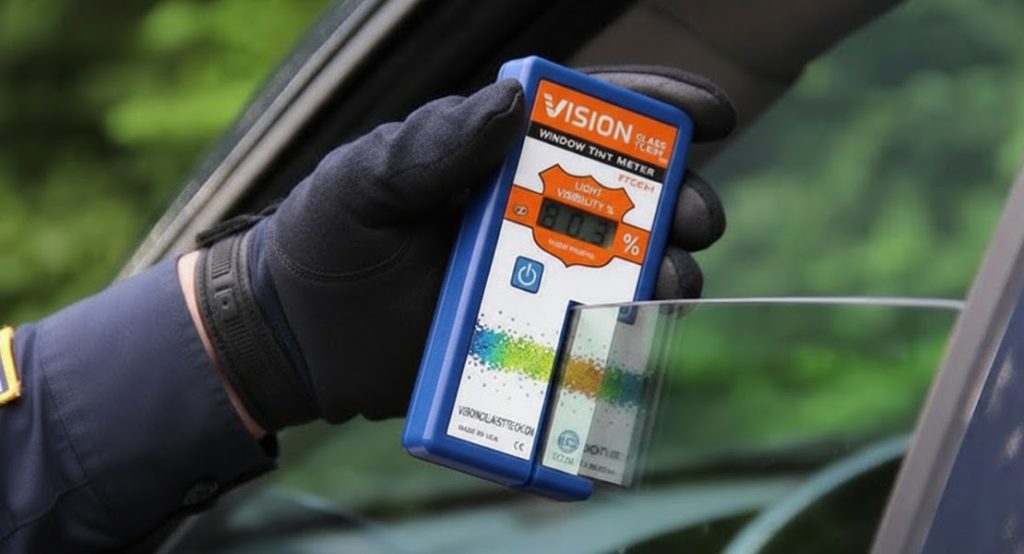
The financial penalties start small and get worse very quickly if you’re not careful. Your first citation will probably cost you around $25, and it doesn’t sound too bad. But if an officer catches you with illegal tint a second time, you’re suddenly looking at a fine somewhere close to $200. And if you still haven’t understood the message after that? The next step is vehicle impoundment, and nobody wants to go through that whole process just because of their window tint.
Certain places throughout Orange County have become popular hotspots for window tint enforcement. Pacific Coast Highway, as it runs through Huntington Beach, has developed quite a reputation for frequent tint stops – officers there seem especially vigilant about checking windows. The 405 corridor that cuts through Irvine is another stretch of road where drivers regularly get pulled over for tint violations. And the enforcement picks up quite a bit during the summer months. Between June and September, officers write far more window tint citations than they do during other parts of the year due to the combination of intense California sunshine and increased traffic volume.
Should you receive a citation for illegal window tint, the court usually gives you 30 days to correct the violation. So you’ll need to remove the illegal tint from your windows, have your vehicle checked by an officer who is authorized to sign off on the correction, and then bring that documentation back to the court as proof of compliance. While it’s not a catastrophic situation, the whole process does take a fair amount of your time and obviously costs you money on top of the fine itself.
The difference between one driver walking away with just a warning and another driver getting slapped with a citation depends on a few factors, and officer discretion is probably the biggest one. The darkness of your tint matters quite a bit, too – windows that barely exceed the legal limit might only earn you a verbal warning. How you talk to the officer during the stop counts as well. Windows so dark you can’t see through them at all, though? That’s going to be a citation every time.
Pick the Right VLT for Your Vehicle
Window tint shops throughout Orange County have an interesting way of dealing with VLT percentages. Instead of pushing you right up against the legal limit, they’ll usually recommend what they call the “50% rule.” If the law says your front windows can’t go darker than 70% VLT, these shops will actually tell you to go with 50% instead. The extra buffer zone makes plenty of sense when you consider a few factors. Tint meters can give slightly different readings depending on the conditions, and the window film darkens a bit as it ages and cures. Nobody wants to pass inspection one day and then get pulled over a month later because their tint has aged into illegal territory.
The vehicle you’re driving plays a bigger role. SUV and truck owners have a natural edge – they sit higher off the ground, which makes it much harder for officers to get a close look at their windows during regular traffic stops. Sports car drivers face the opposite problem. With their low seating position, those tinted windows sit right at eye level for patrol officers and other drivers, which means any violation becomes obvious right away.
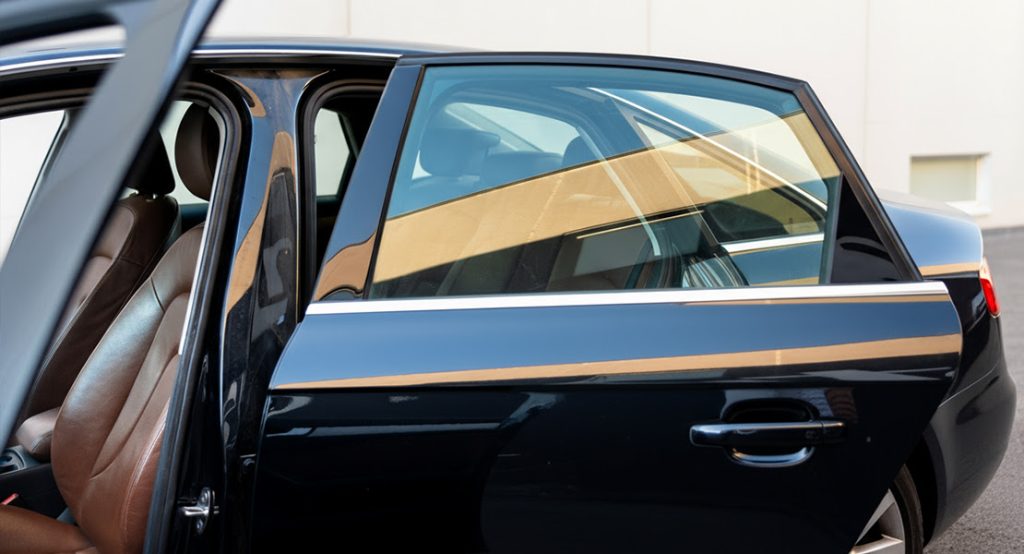
Orange County sees more than 280 sunny days each year, and you want protection from all that heat and UV exposure as you stay within the legal limits. Film quality is a big consideration here. Ceramic films hold their VLT percentage much more reliably over time compared to standard dyed films. The upfront investment for ceramic is higher; I won’t sugarcoat that. The trade-off is that ceramic won’t fade, bubble or turn that awful purple color after a few brutal summers.
Plenty of drivers miss an important detail about their vehicles. Most cars, especially newer models, already have some level of factory tinting built in, particularly on the rear windows. Once you add aftermarket film over that existing factory tint, the VLT percentages don’t add up – they actually multiply together. What that means in practice is that your new 50% film applied over factory 80% glass gives you a combined 40% VLT. The math can quickly land you in illegal territory even without realizing what happened!
Medical Permits That Allow Darker Tint
Medical exemptions get you permission for much darker window tint if you have certain health conditions that make it necessary. California does let drivers who need serious sun protection work around the normal tint laws. You’ll need your doctor to work with the DMV on an application, and the process does take a bit of time and paperwork. But it’s certainly possible if you meet the requirements.
Lupus and melanoma are two of the primary conditions that usually qualify for these particular permits. Photosensitivity disorders also make the list, and for valid reason – with these conditions, your skin has an extreme reaction to sunlight and needs that extra barrier between you and the harmful UV rays. These three represent the most commonly approved conditions. But they’re not the only ones that can qualify, and each case gets reviewed on its own merits.
The process starts when your doctor fills out form REG 256, which is the official physician certification document. This form needs your doctor to explain in detail your particular condition and the reasons why standard window tint won’t give you adequate protection for your situation. Once the paperwork is complete, you submit it to the DMV’s Medical Review department for evaluation.
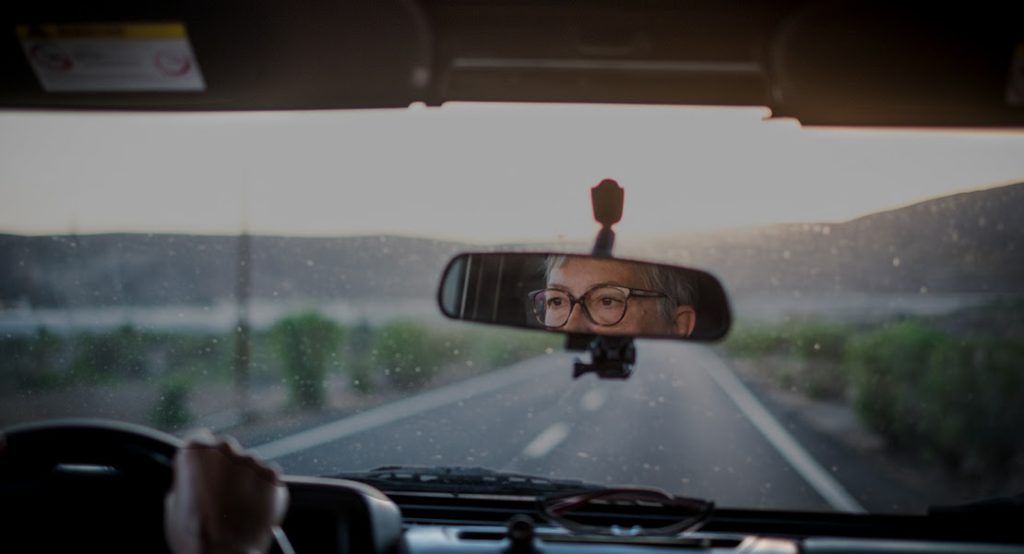
An approved exemption lets you install window tint as dark as 35% VLT on your front windows – that’s much darker than the standard 70% requirement that everyone else has to follow. The certificate that proves your exemption needs to be displayed somewhere visible to law enforcement officers who might pull you over. Most drivers find it convenient to leave it on their dashboard or attach it to their sun visor, where it can be easily seen.
These exemptions aren’t permanent and need renewal every 2 years. At renewal time, your doctor is going to need to give updated certification that confirms your continued need for the accommodation. These requirements and procedures are spelled out in California Vehicle Code Section 26708.2 for anyone who wants to review the exact legal language and requirements.
Law enforcement officers throughout Orange County already know all about the medical exemption process, and they know what they’re looking for when they pull over vehicles that have darker window tint. As long as your paperwork is up to date and you have it displayed the right way, you won’t have any problems during a traffic stop.
Transform Your View with Professional Tinting
The 70% requirement for front windows can definitely feel restrictive the first time you hear about it. Orange County law enforcement takes these regulations very seriously, though, and once you see how frequently they actually pull drivers over for window tint violations, it makes a lot more sense to just stay within the legal limits from day one.
The best strategy is all about balance – you want your car to look sharp and feel comfortable, and you also want to stay away from tickets. The great news is that you can still get great heat reduction and UV protection even with that 70% VLT requirement on your front windows, and you have a lot more freedom with your rear windows if privacy is what you’re after. You’ll have much better conversations with tint installers, and everyone will be on the same page about what you’re paying for and why it helps you stay on the right side of California law.
Picking the right VLT levels gives you something money can’t always buy – genuine comfort. You won’t feel that little spike of anxiety every time a patrol car pulls up next to you at a red light, and you won’t have to go through the whole expensive mess of removing illegal tint and starting over.
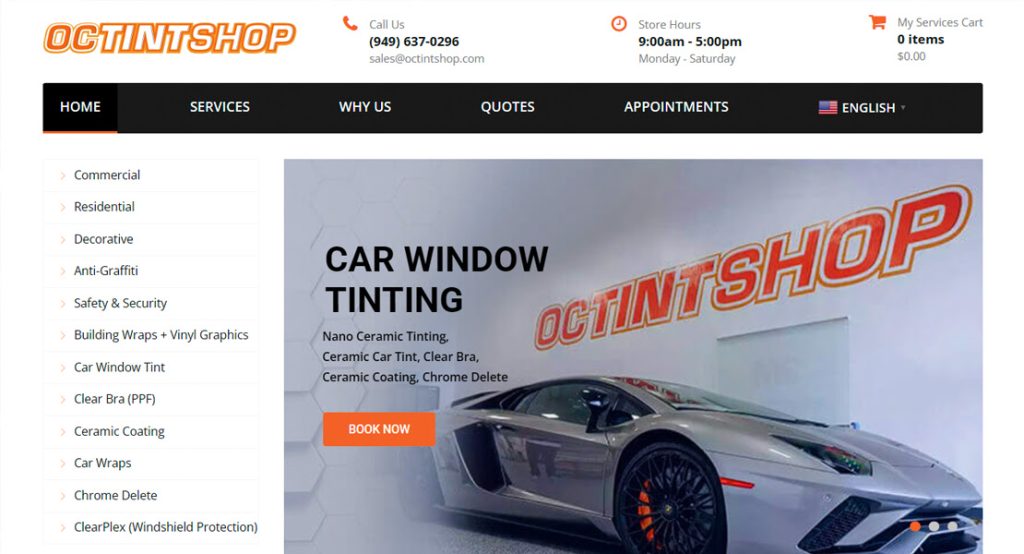
At OC Tint Shop, we’ve spent years helping Orange County drivers work out what works for their goals. Our team has the local laws down to a science, and we love finding that perfect balance between what’s legal and what each customer actually wants for their vehicle. We work with drivers from our Newport Beach location all the way out to Anaheim and everywhere in between, and we’ve installed thousands of window tints that meet California’s strict requirements while still delivering the heat reduction, UV protection and the sharp look our customers are after.
Ready to get your windows tinted properly? Schedule your free consultation now, and our experienced technicians will show you how the right VLT choice can change your daily drive and help you stay legal on Orange County roads.

